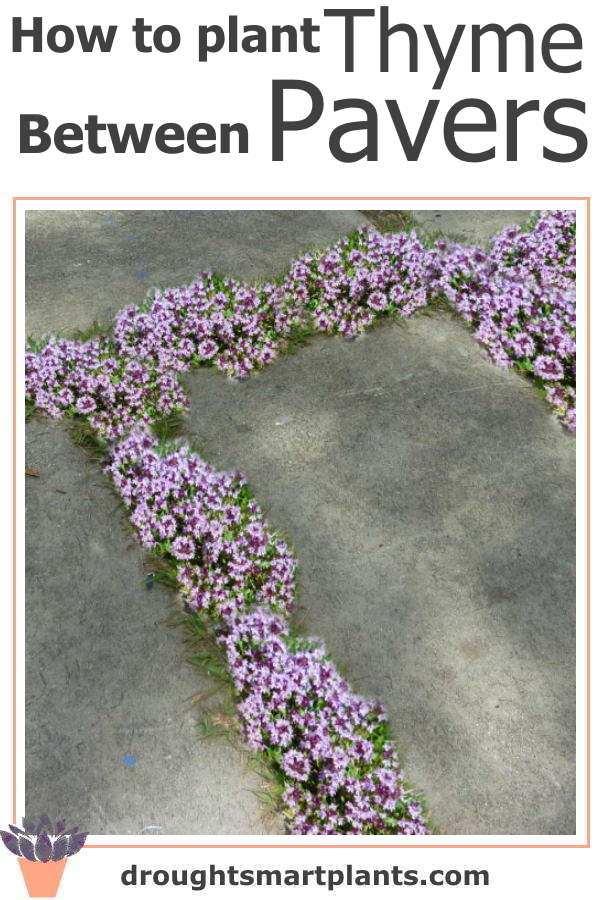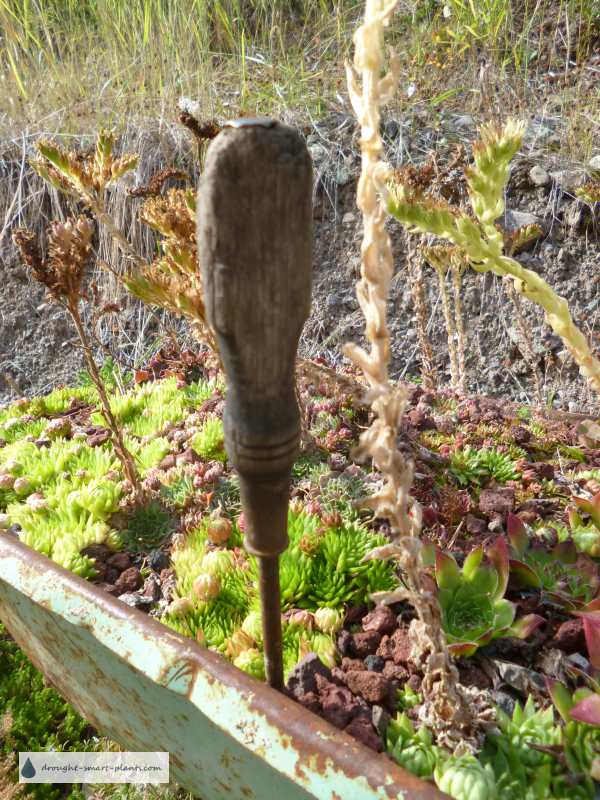Tips and Tricks
As an Amazon Associate I earn from qualifying purchases.
Other links on this site may lead to other companies that I’m associated with.
Ideally, your thyme plugs will arrive at the same time as the pavers or bricks and you can plant them at the same time into the spaces between them. But how do you plant them afterwards?

There are several options, and luckily, thyme is a really easy going plant and will thrive no matter what, as long as you follow these tips.
Keep in mind that thyme has a few windows of opportunity for planting and transplanting – the ideal time is in June or earlier, when the ground is warm but there’s some rain in the forecast, with dull days.
Brilliant sunshine is great for established plants, but young ones don’t like it much.
If your thyme shows up in the form of larger plants in four inch pots or even large chunks set in a flat, these can be well watered the night before, then carefully pulled or cut apart into manageable pieces.
The soil that they’re planted in can be mostly removed, or in the case of wet soil, simply molded around the roots to give them a bit of a reserve of moisture.
Quite often, that little bit of soil is enough to keep them going until they can establish a root system, usually by burrowing underneath the pavers where there’s a bit of moisture.
If you have plugs, where every little plant has its own cell, that makes it easier to get a more even look. Estimate how many plugs you have, and space them out so you have enough coverage.
Then pull the soil at the bottom of each cell off – this is especially important if the roots are wound around as these will never break out of that shape by themselves.

The best tool to use for the next step is a chopstick, small twig or even a metal spike. Scratch a hole into the space between the pavers, then wind the base of the root ball around the end of the chopstick.
I’ve been known to use my Grandads old screwdriver for this too.
Insert it into the hole, then prevent the root ball from coming out of the hole by pinching with your fingers.
Spread a bit of loose soil or sand over it, and then once you’ve planted a bunch, water well. This will help set the pavers, and fill in any air holes around the roots, a sure way to kill off a plant.
Be prepared for a bit of time to elapse before the thyme fills in the complete gap between the pavers. It can take several seasons before it looks full.

